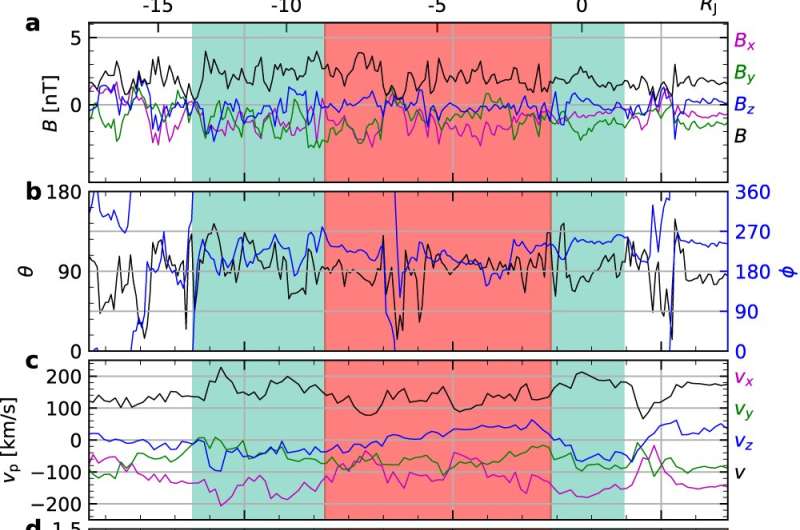January 11, 2024 report
This article has been reviewed according to Science X's editorial process and policies. Editors have highlighted the following attributes while ensuring the content's credibility:
fact-checked
peer-reviewed publication
trusted source
proofread
Jupiter has at least three magnetosheath jets, finds Voyager 2 data study

A team of astrophysicists and astronomers from Harbin Institute of Technology, Johns Hopkins University and Peking University has found evidence from Voyager 2 data showing that Jupiter has at least three magnetosheath jets. The study is published in Nature Communications.
Magnetosheath jets are streams of plasma that form around planets in the area where the solar winds strike a planet's magnetic field—they form as collisions slow the solar wind while also heating it. Jets have been found around Earth and Mars (just last summer) and there is evidence that jets may exist around Mercury. Because of the Mars finding, researchers have been searching for them around other planets. In this new effort, the research team looked for evidence of jets around Jupiter.
They studied data from Voyager 2, a craft that passed close to Jupiter back in 1979. They chose to study its data rather than data from other more recent craft because Voyager 2 did not approach as closely. The research team suspected evidence of jets would need to be from a reasonable distance from the planet due to its huge magnetosphere—prior research has shown that it extends up to 3 million kilometers from the planet.
The researchers found what they describe as an uptick in proton distribution—evidence of jets, one moving toward the sun, and two moving in the opposite direction. They also found that the size of Jupiter's bow shock (the point where the solar winds strike the magnetic field) was similar in scale compared to bow shocks for both Earth and Mars.
The research team suggests discovery of jets around Jupiter increases the odds of finding them around all or most of the other planets in the solar system, and beyond. It also helps scientists to better understand how all the layers around planets interact—something that could prove useful as humans attempt to travel to other parts of the solar system.
More information: Yufei Zhou et al, Magnetosheath jets at Jupiter and across the solar system, Nature Communications (2024). DOI: 10.1038/s41467-023-43942-4
Journal information: Nature Communications
© 2024 Science X Network





















